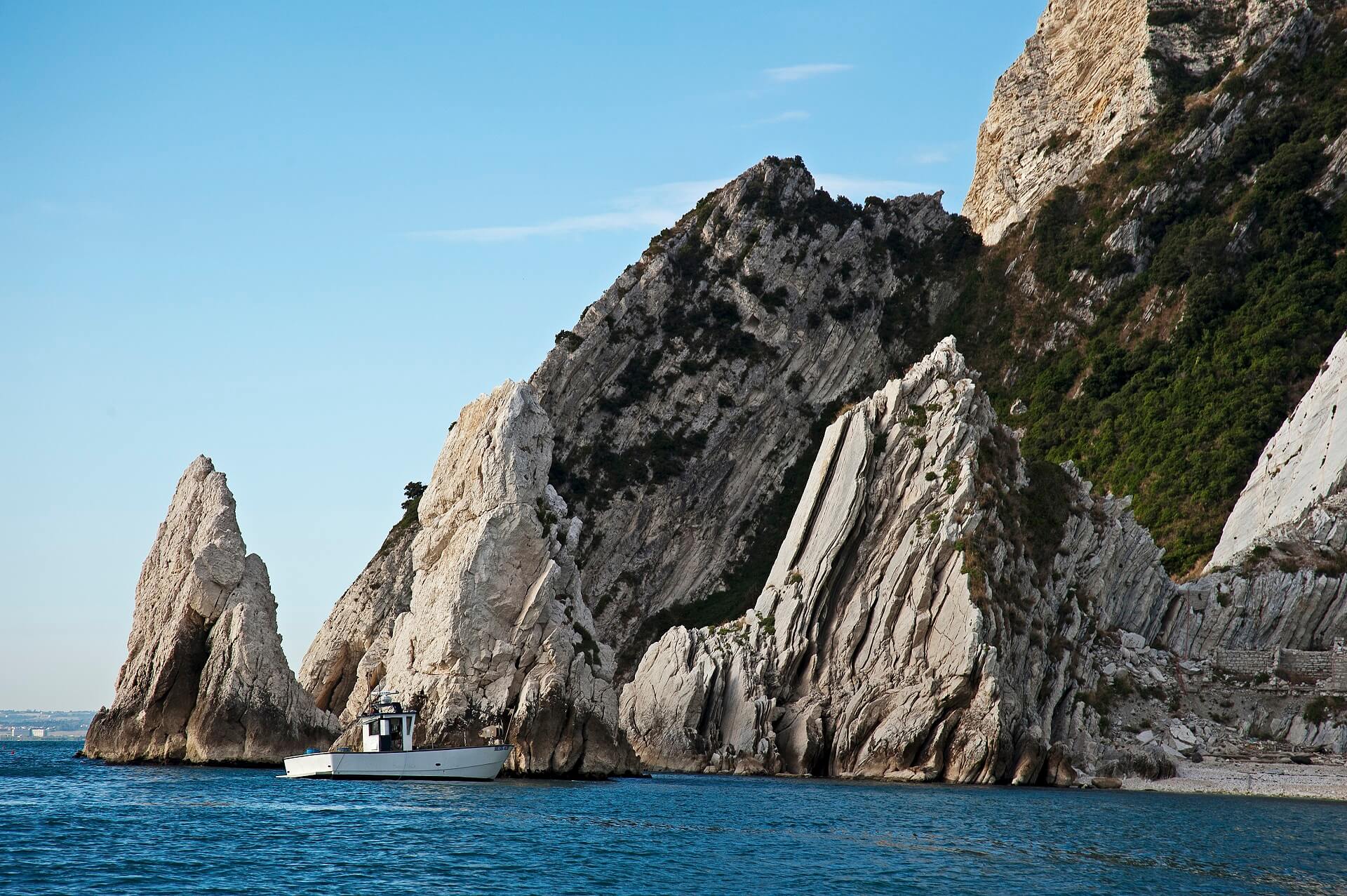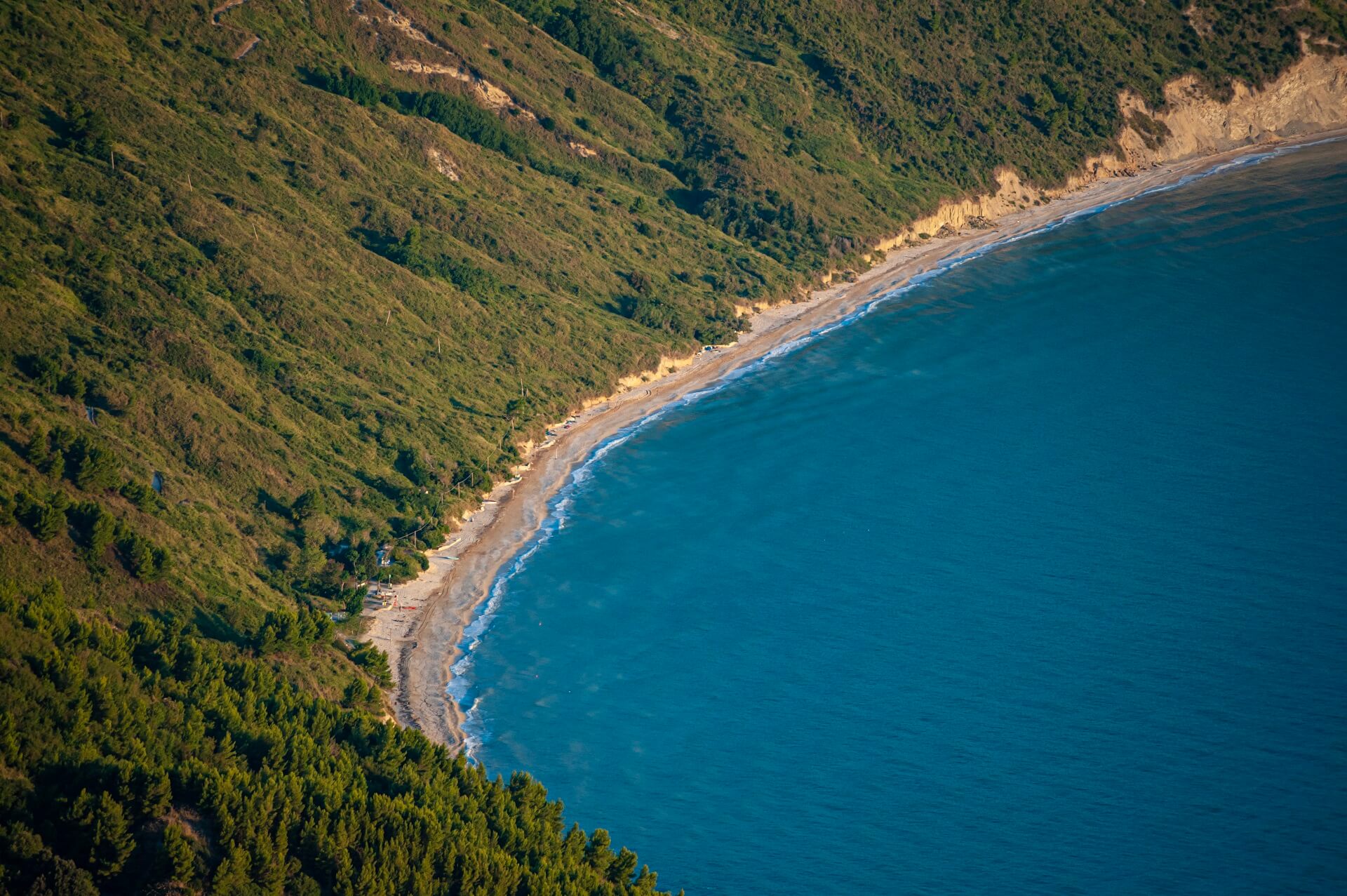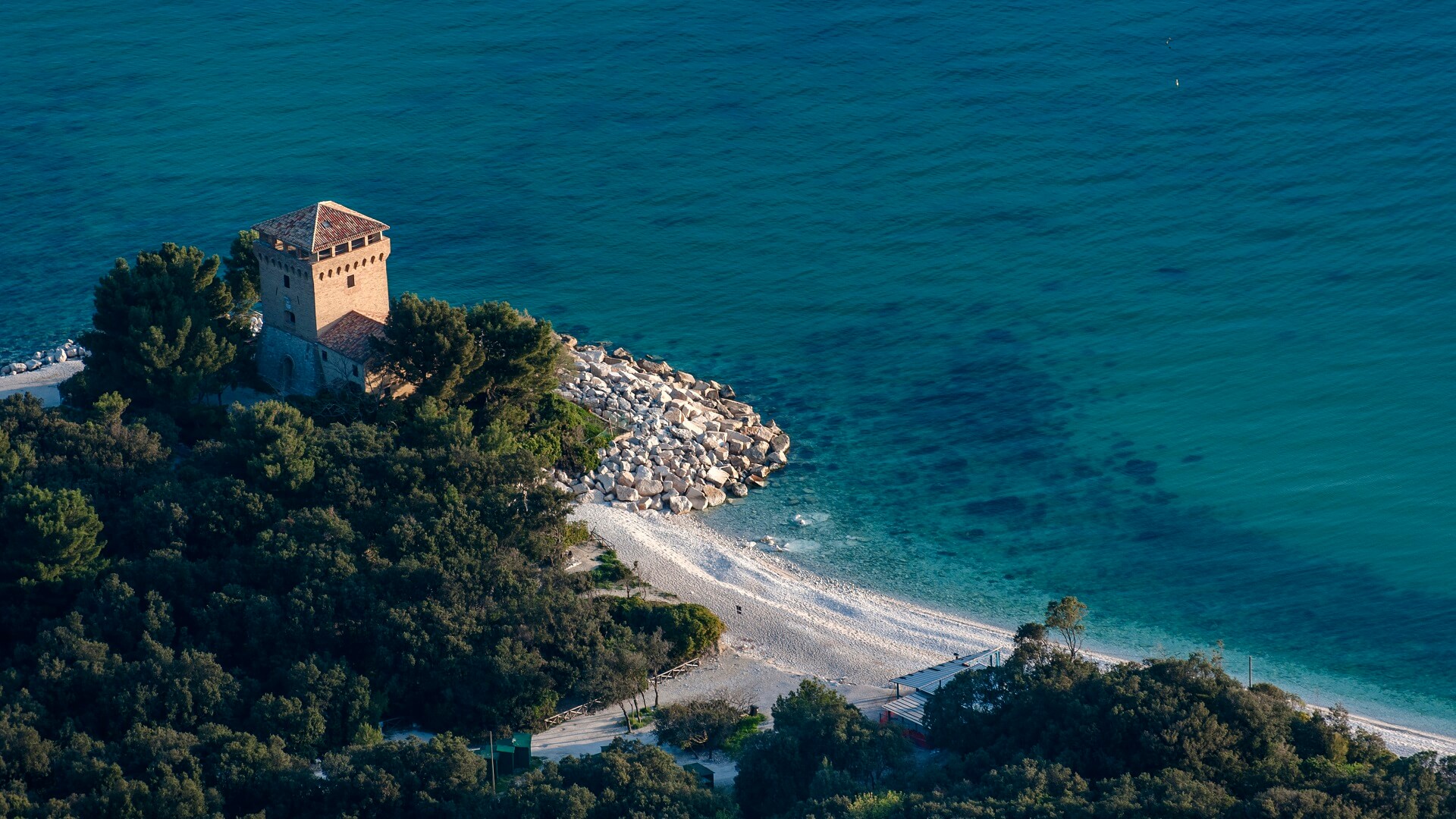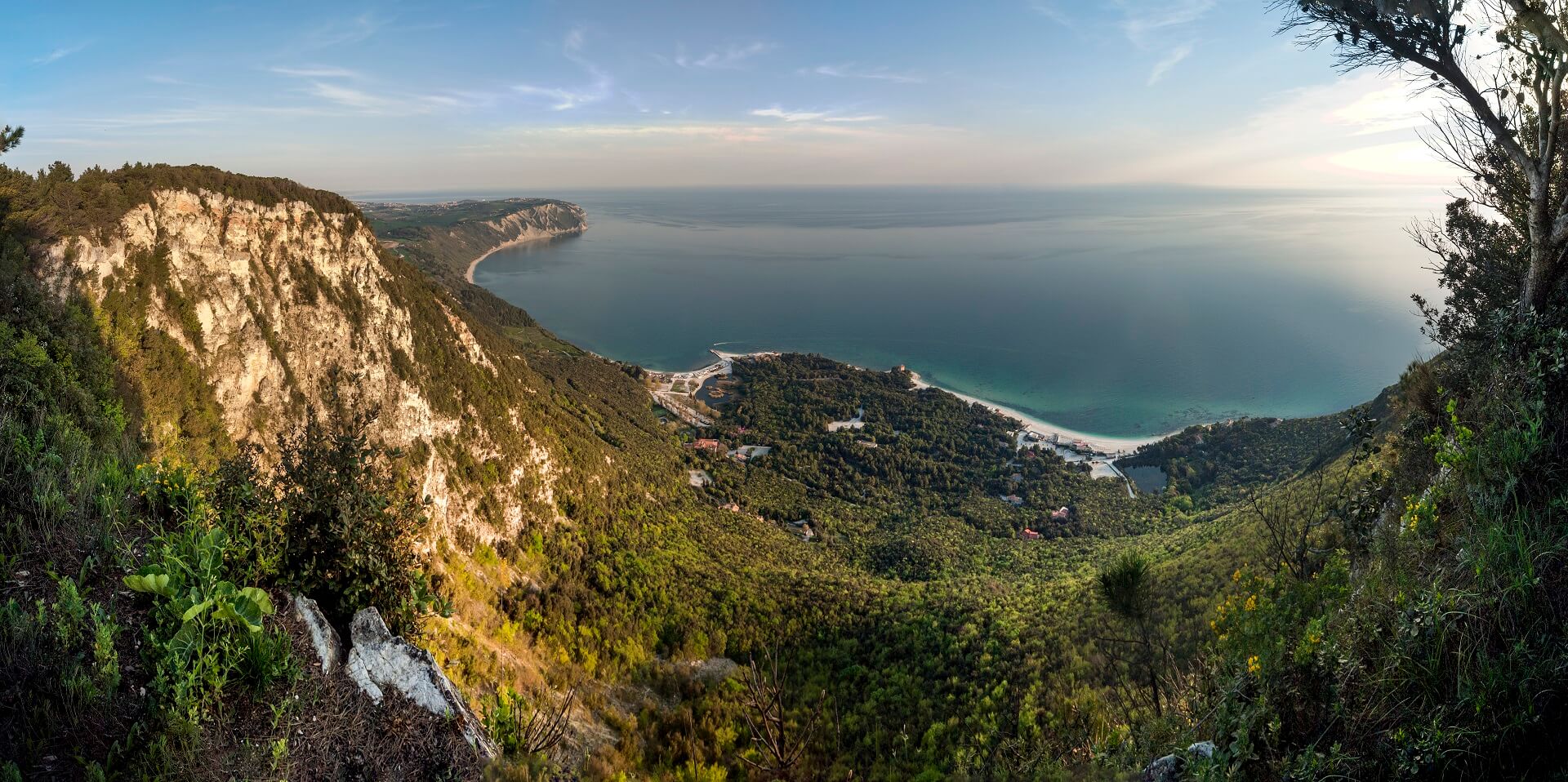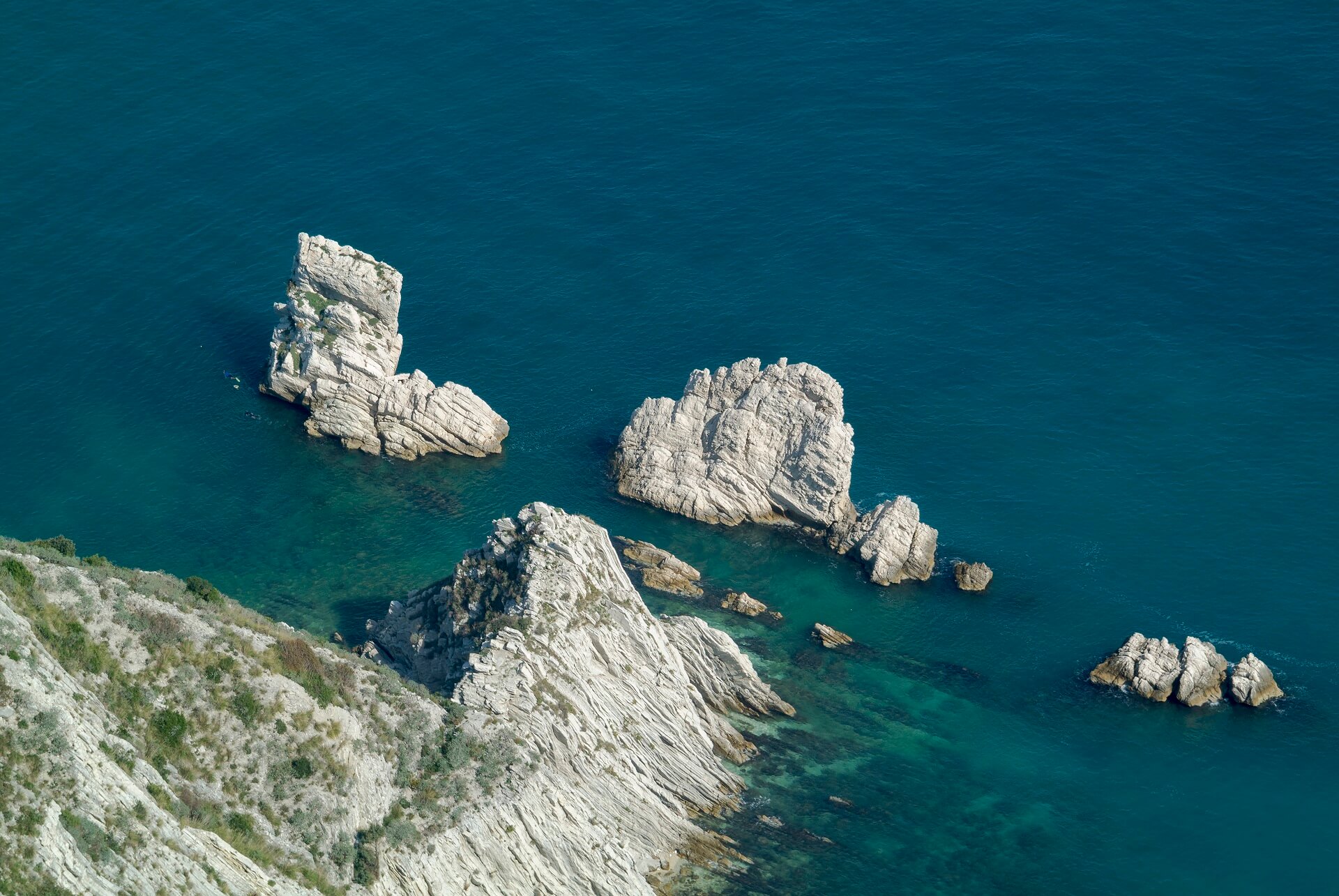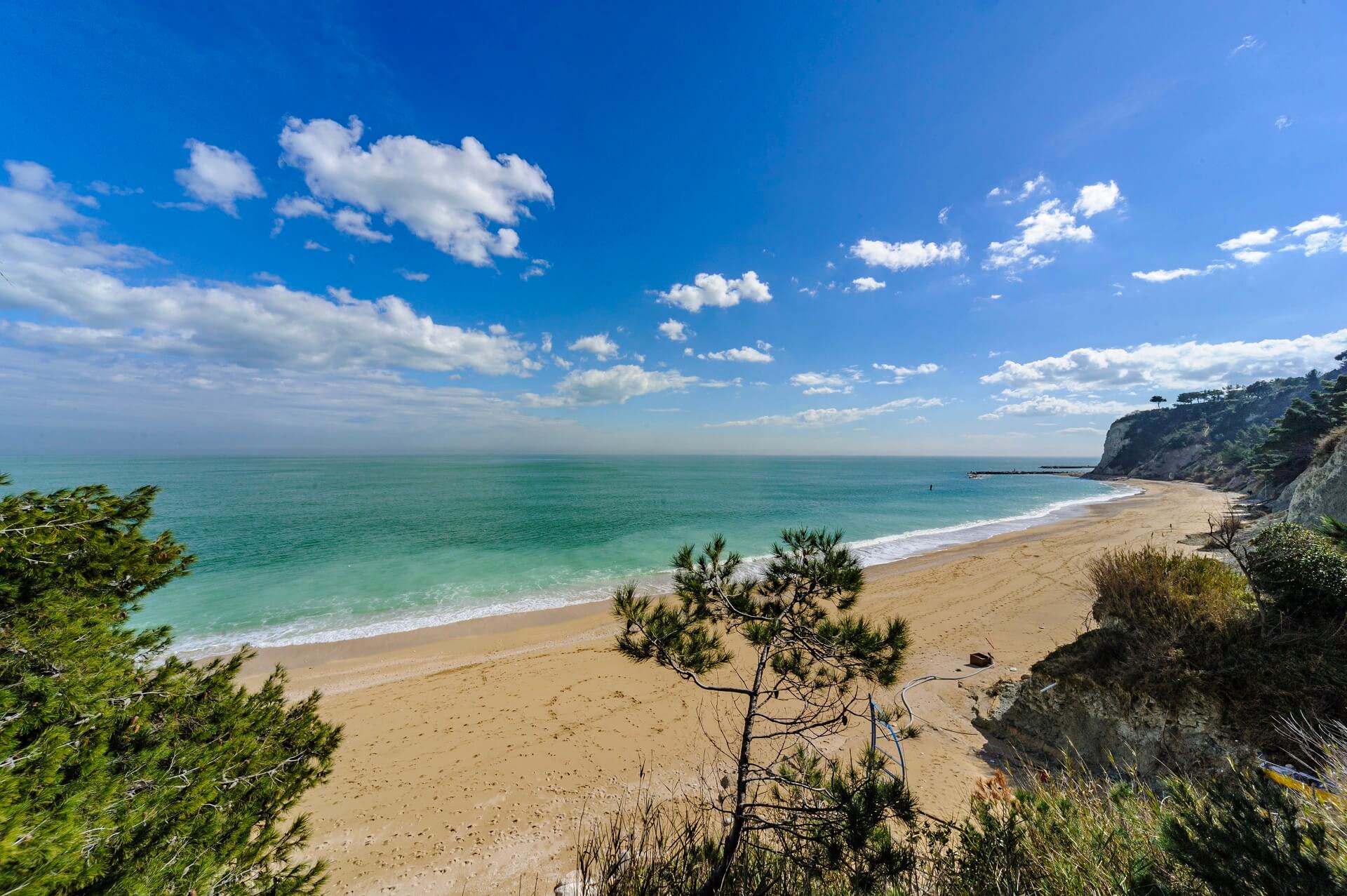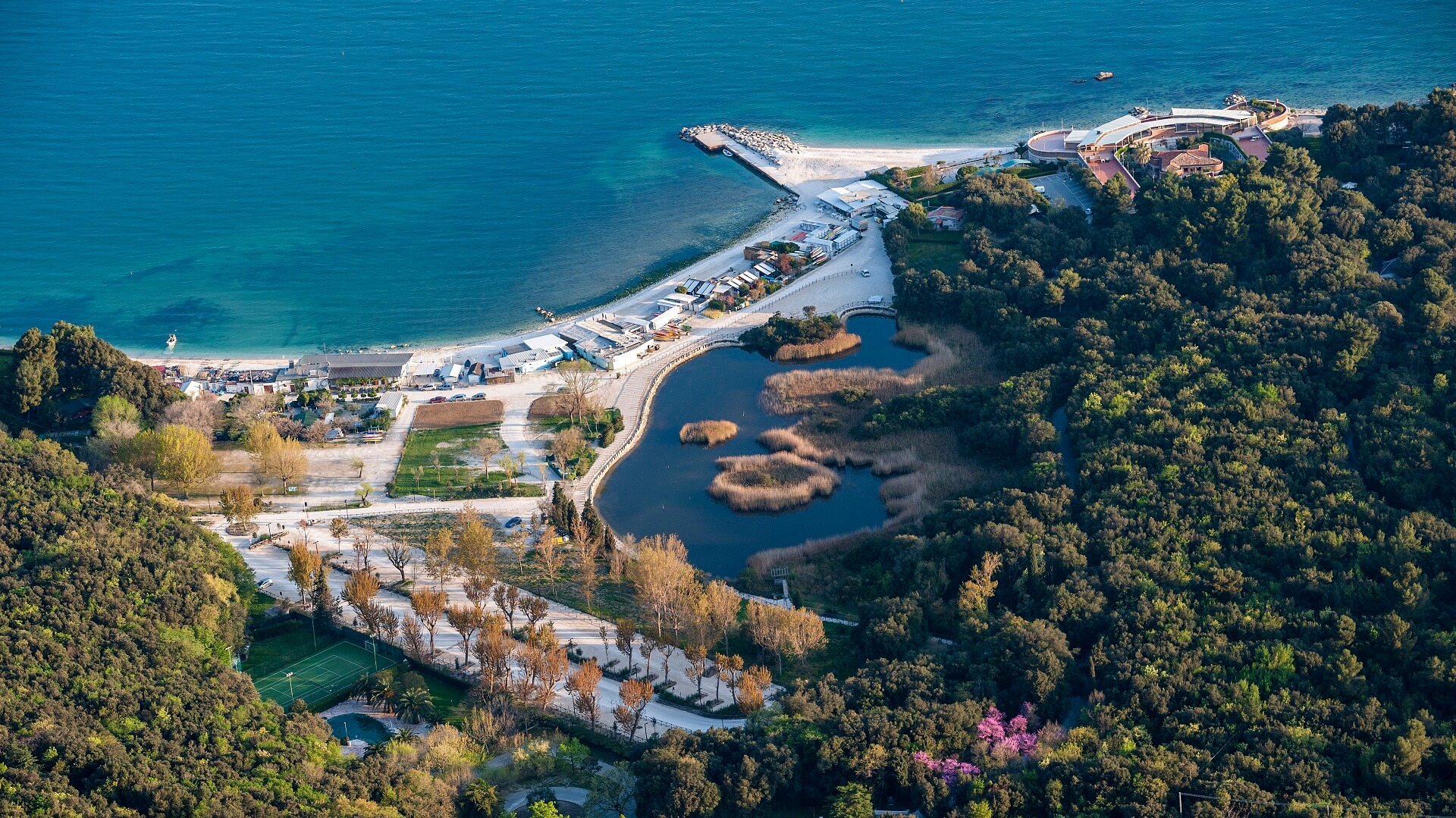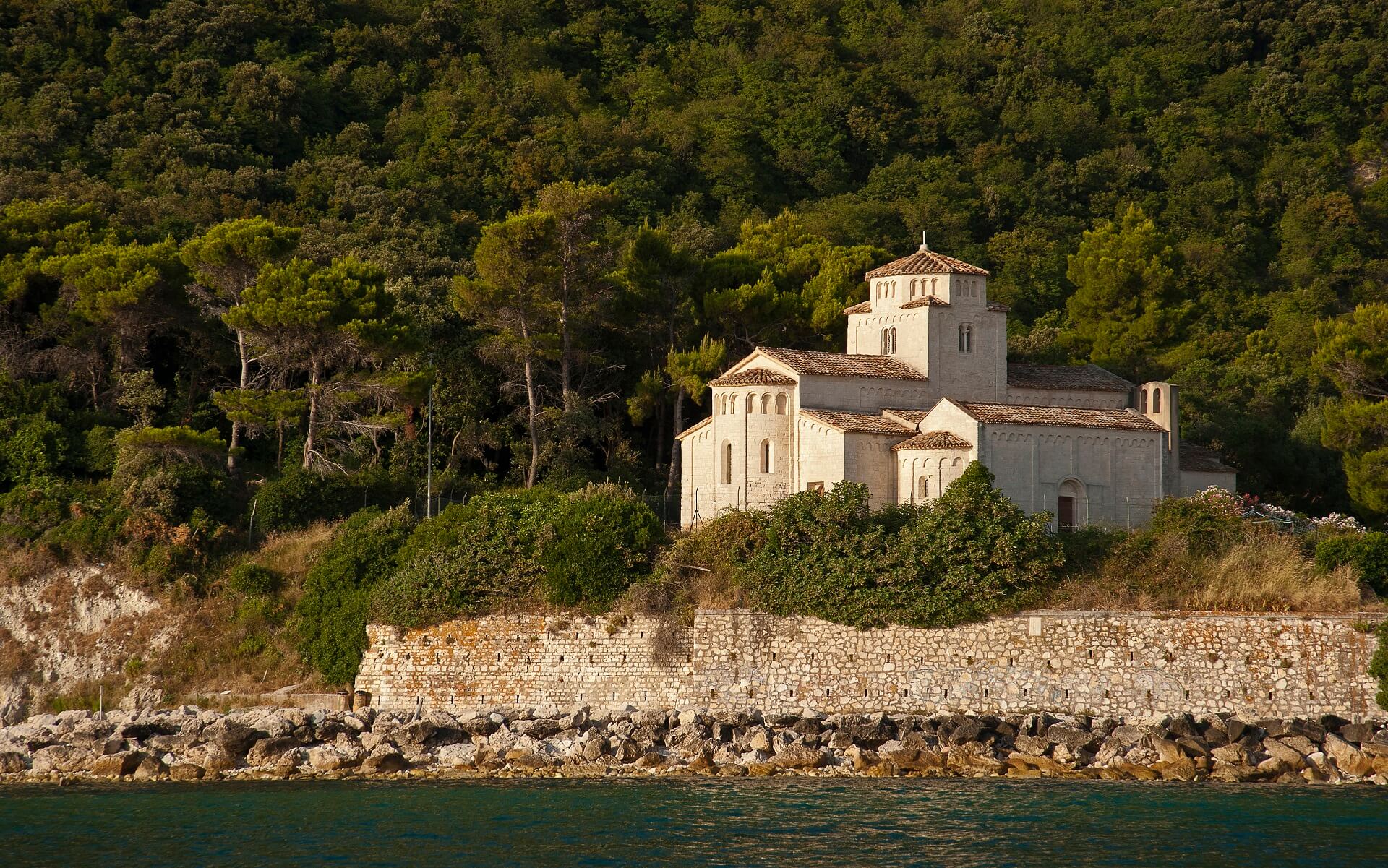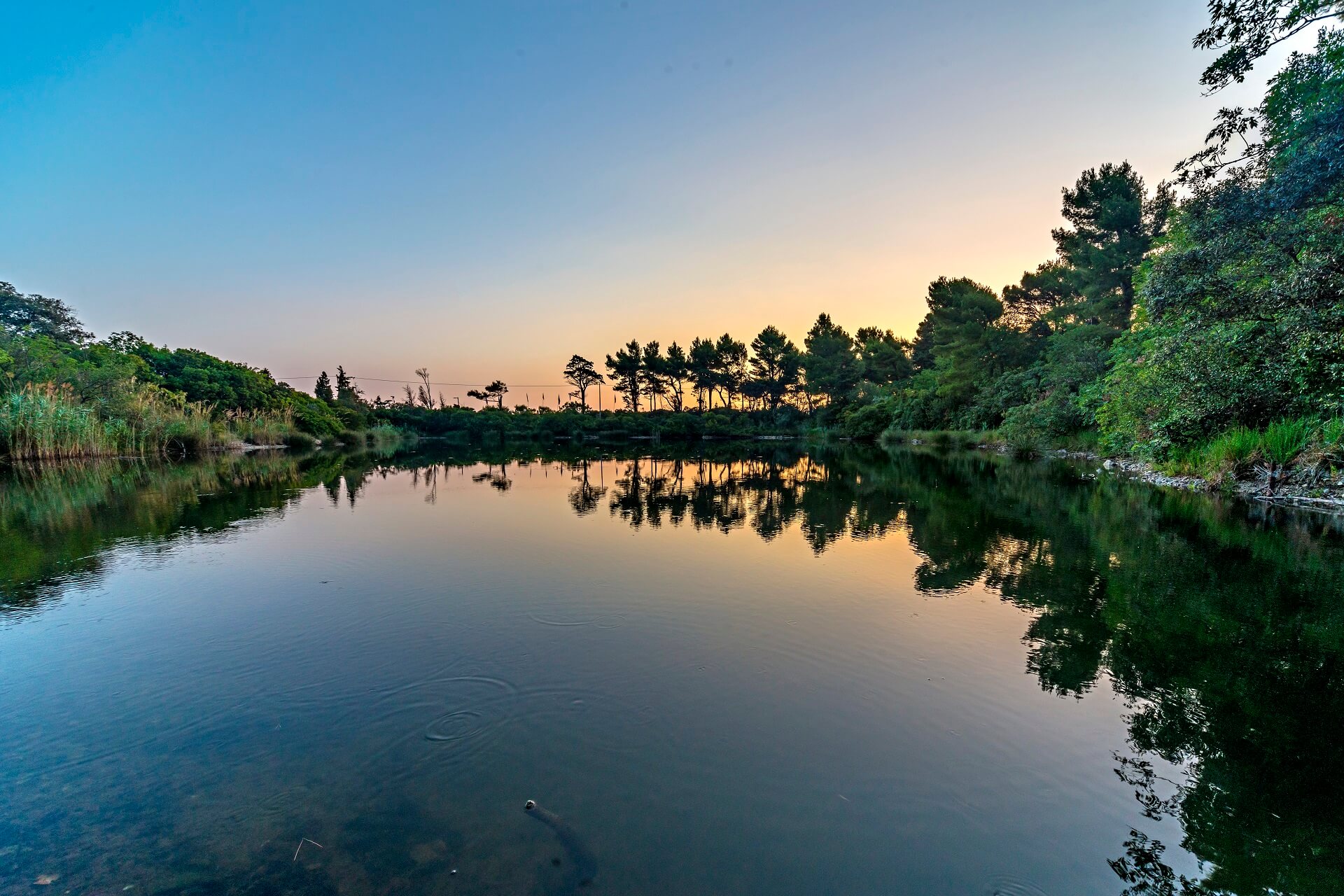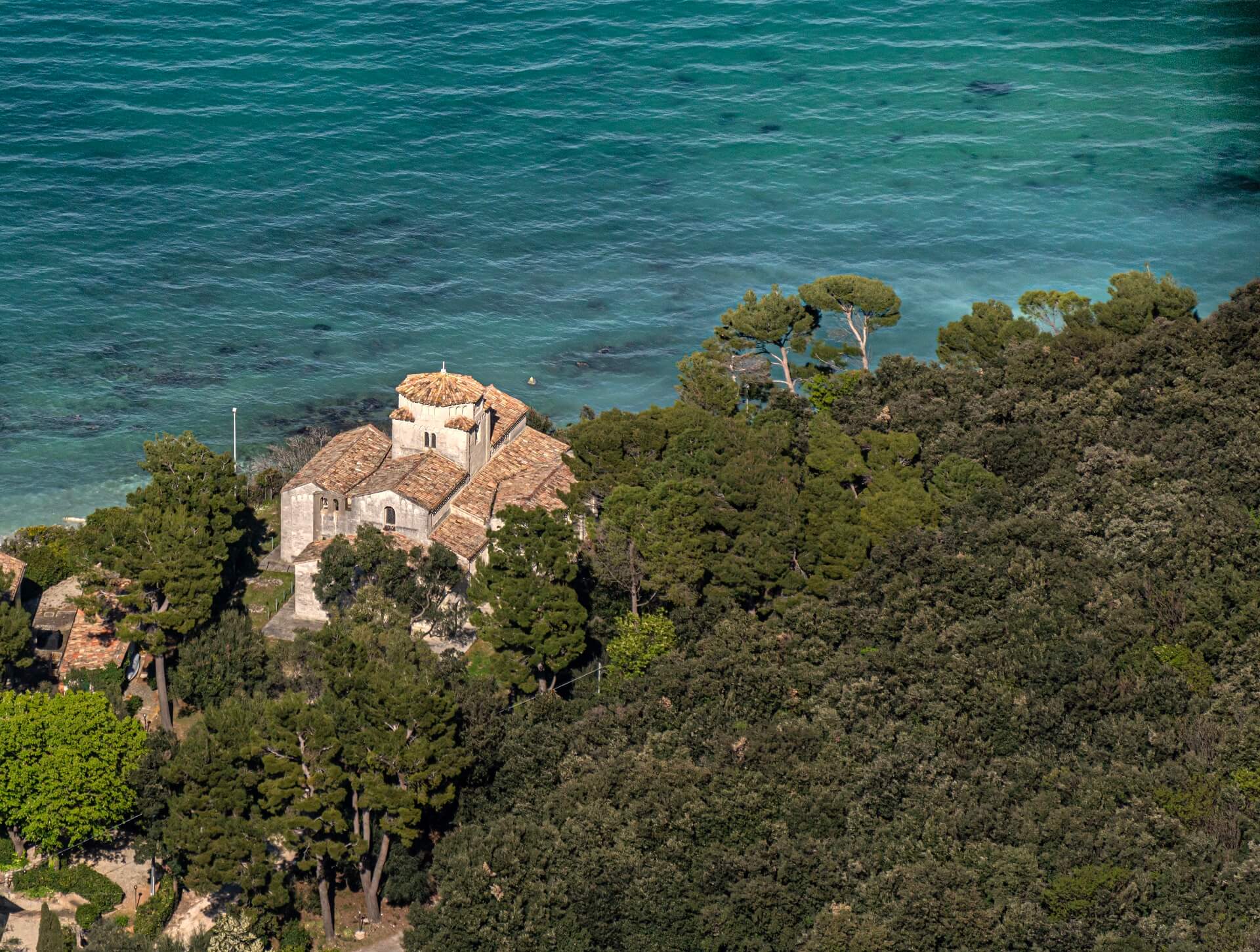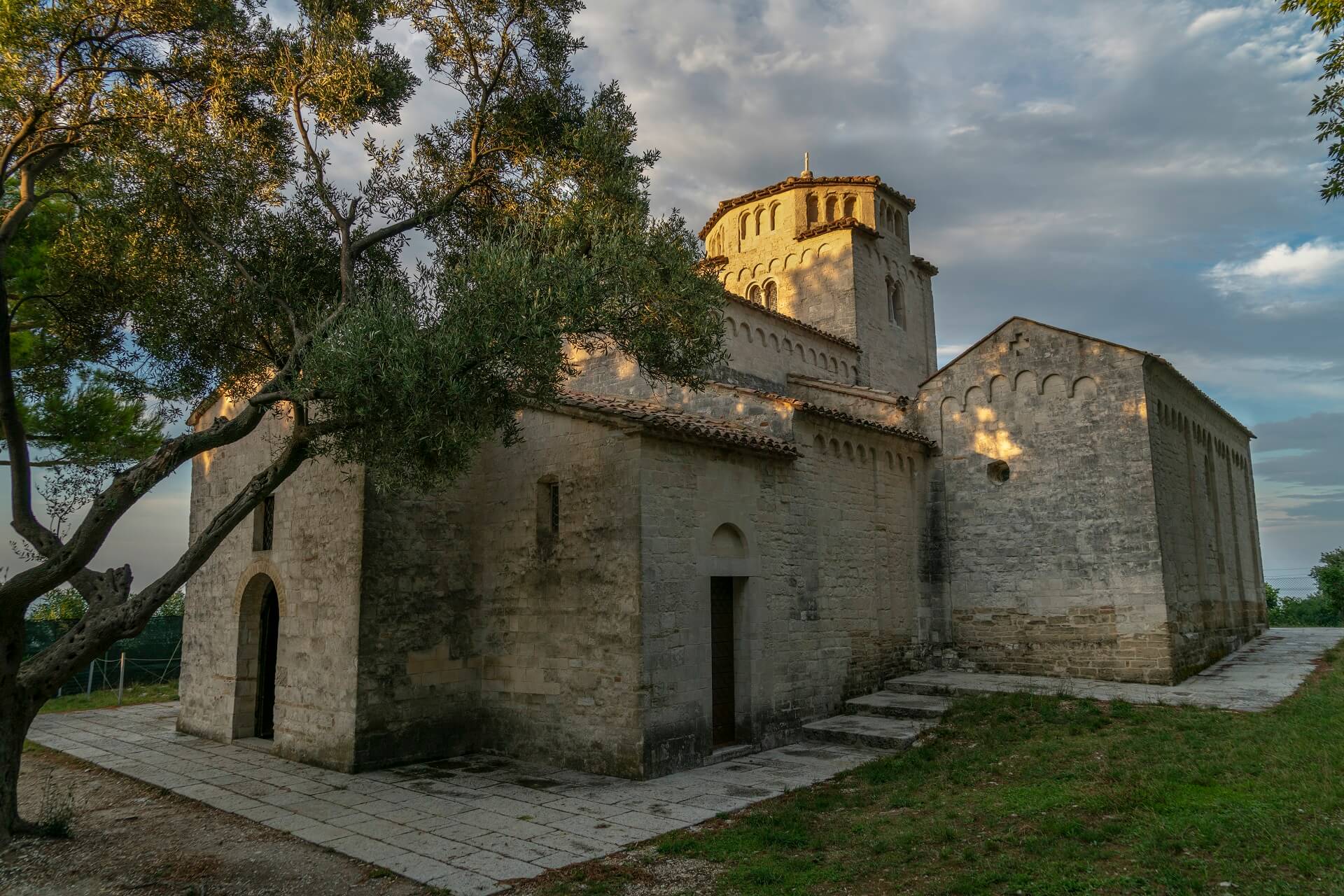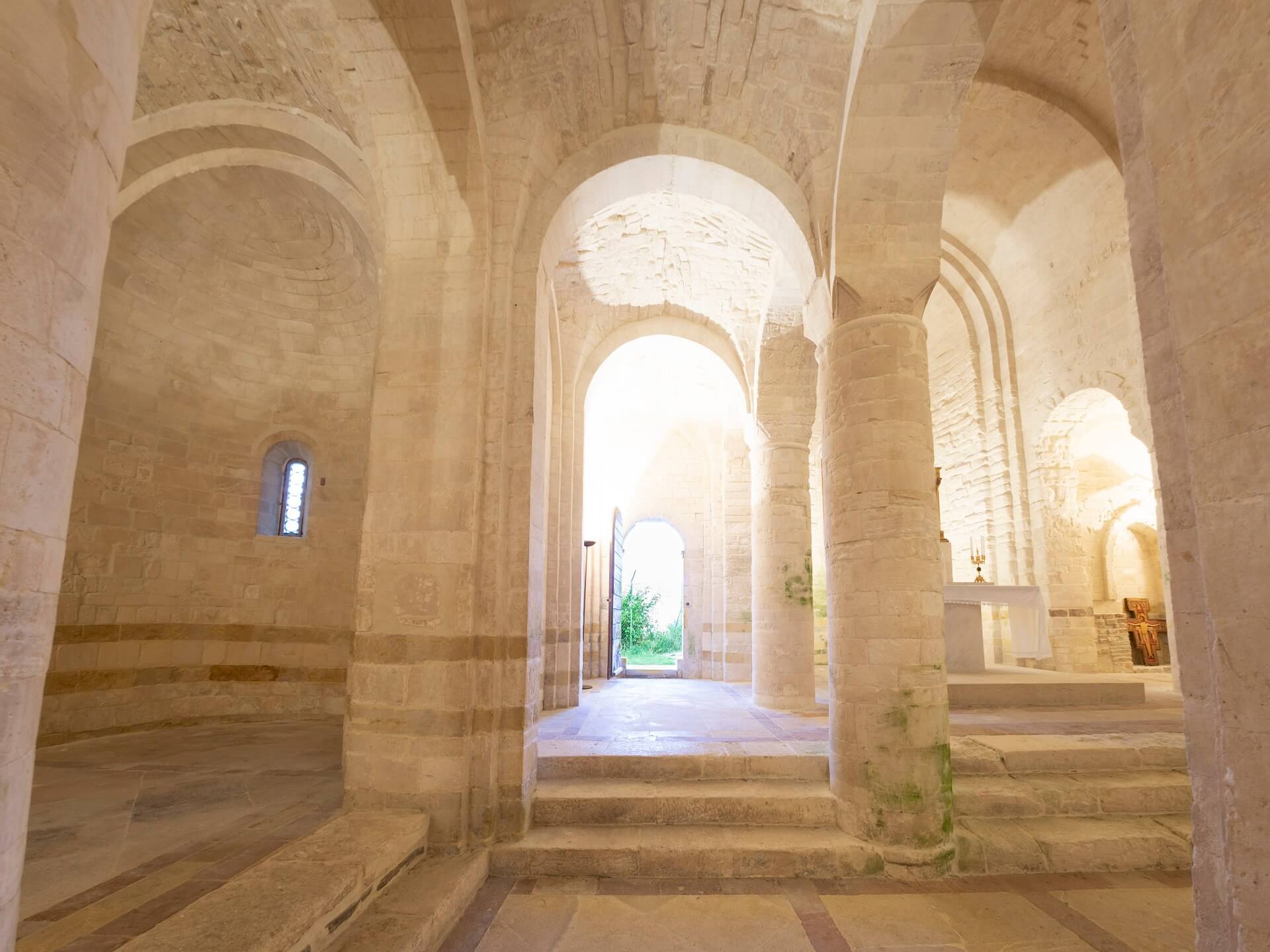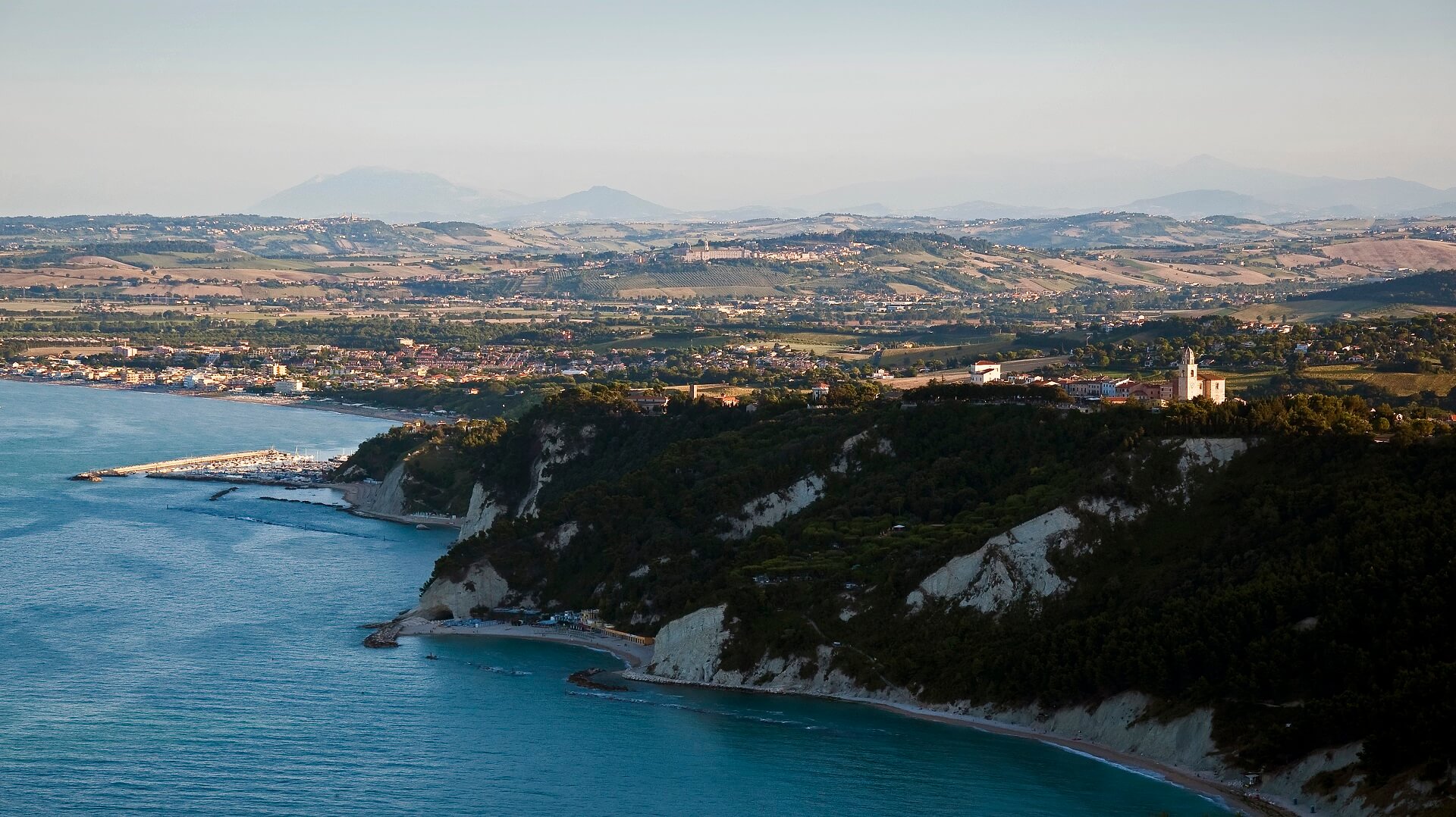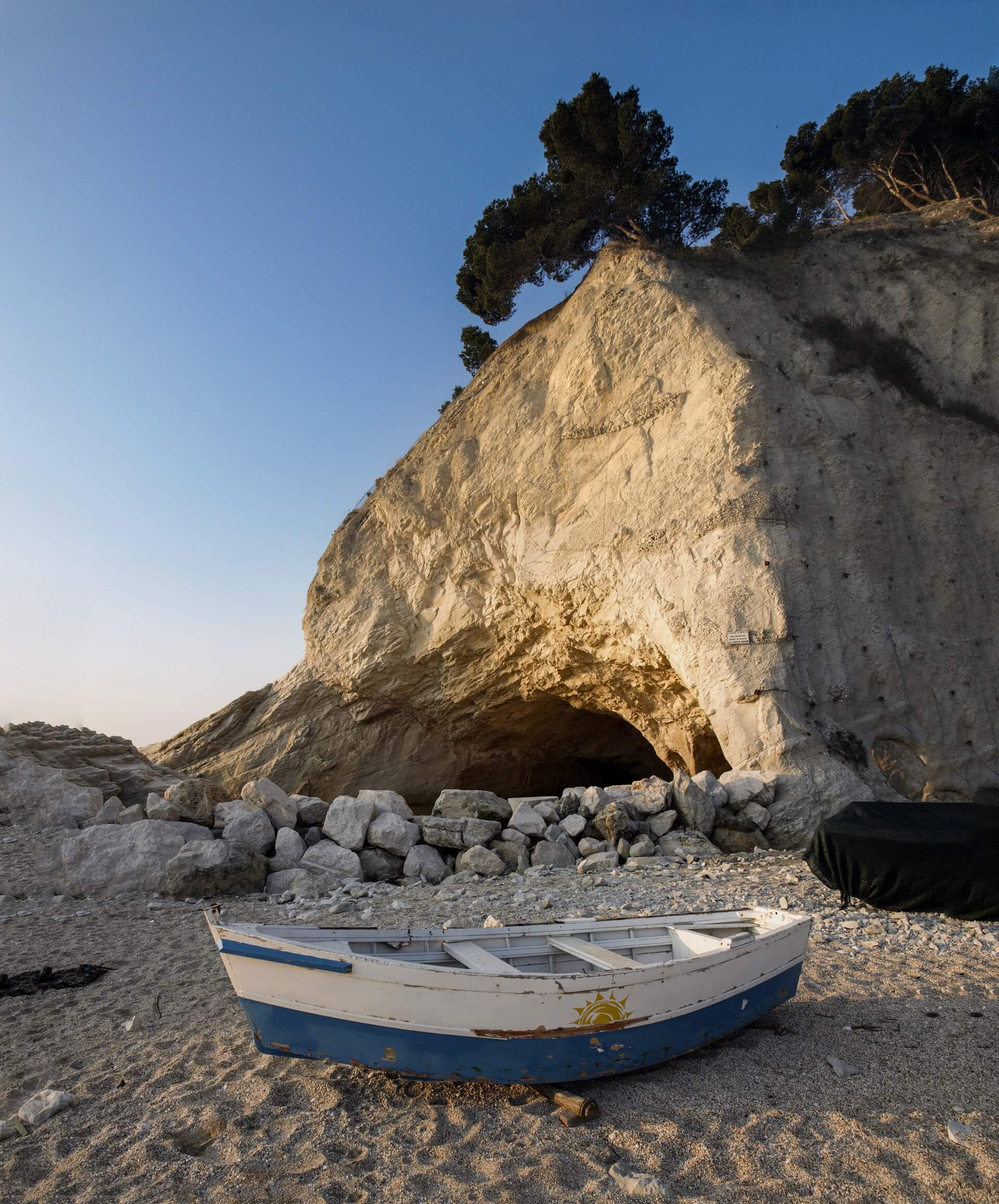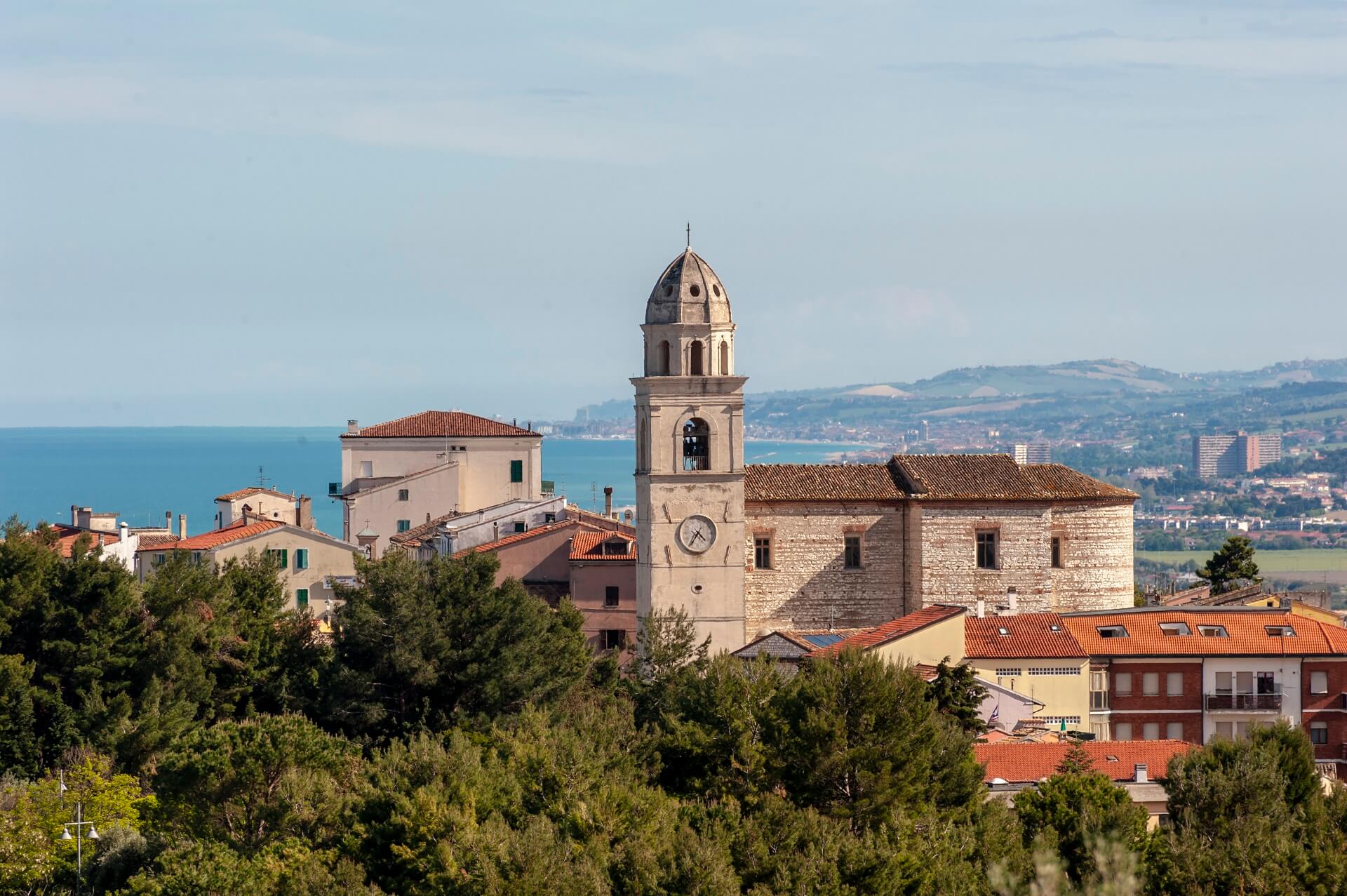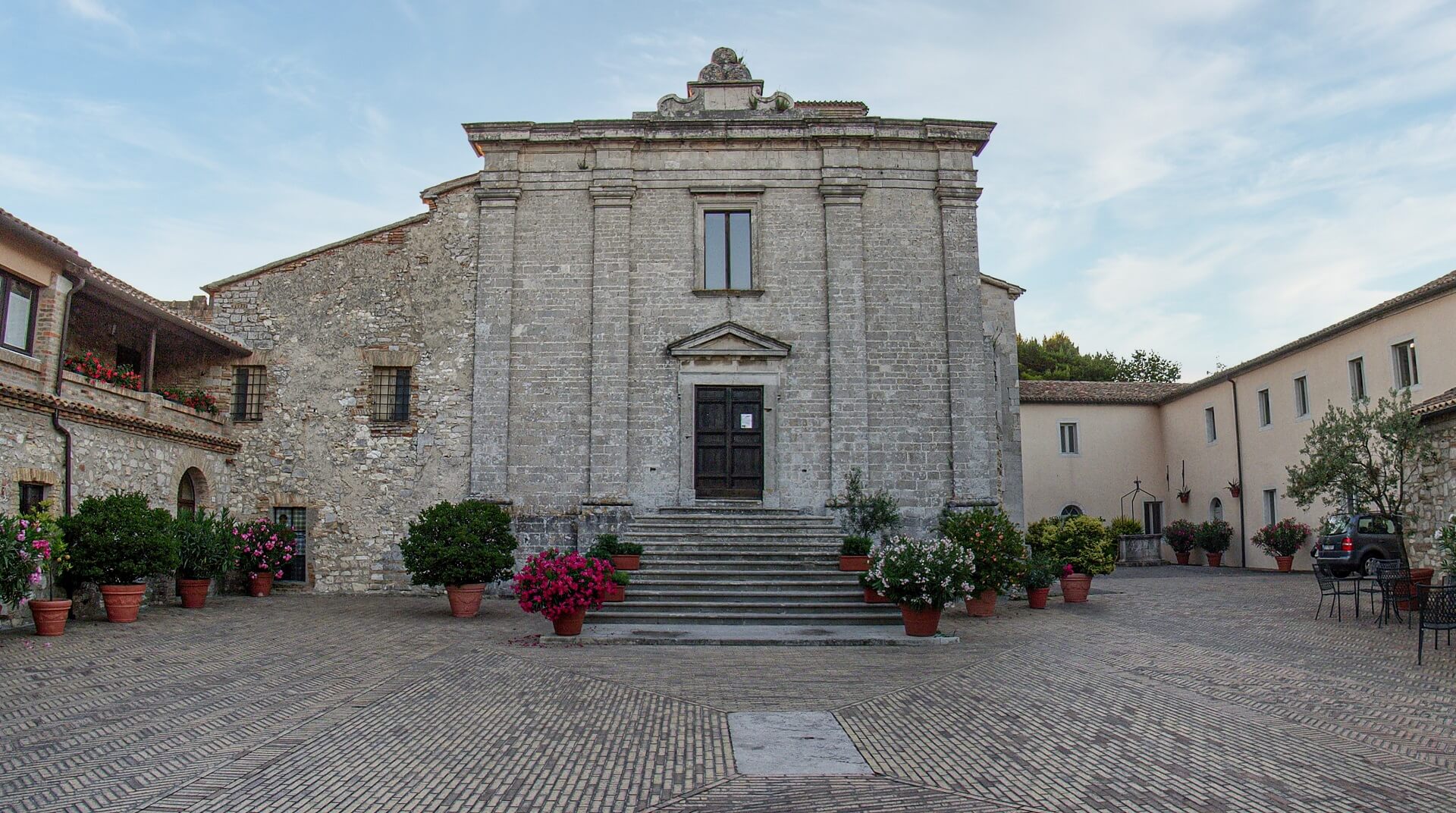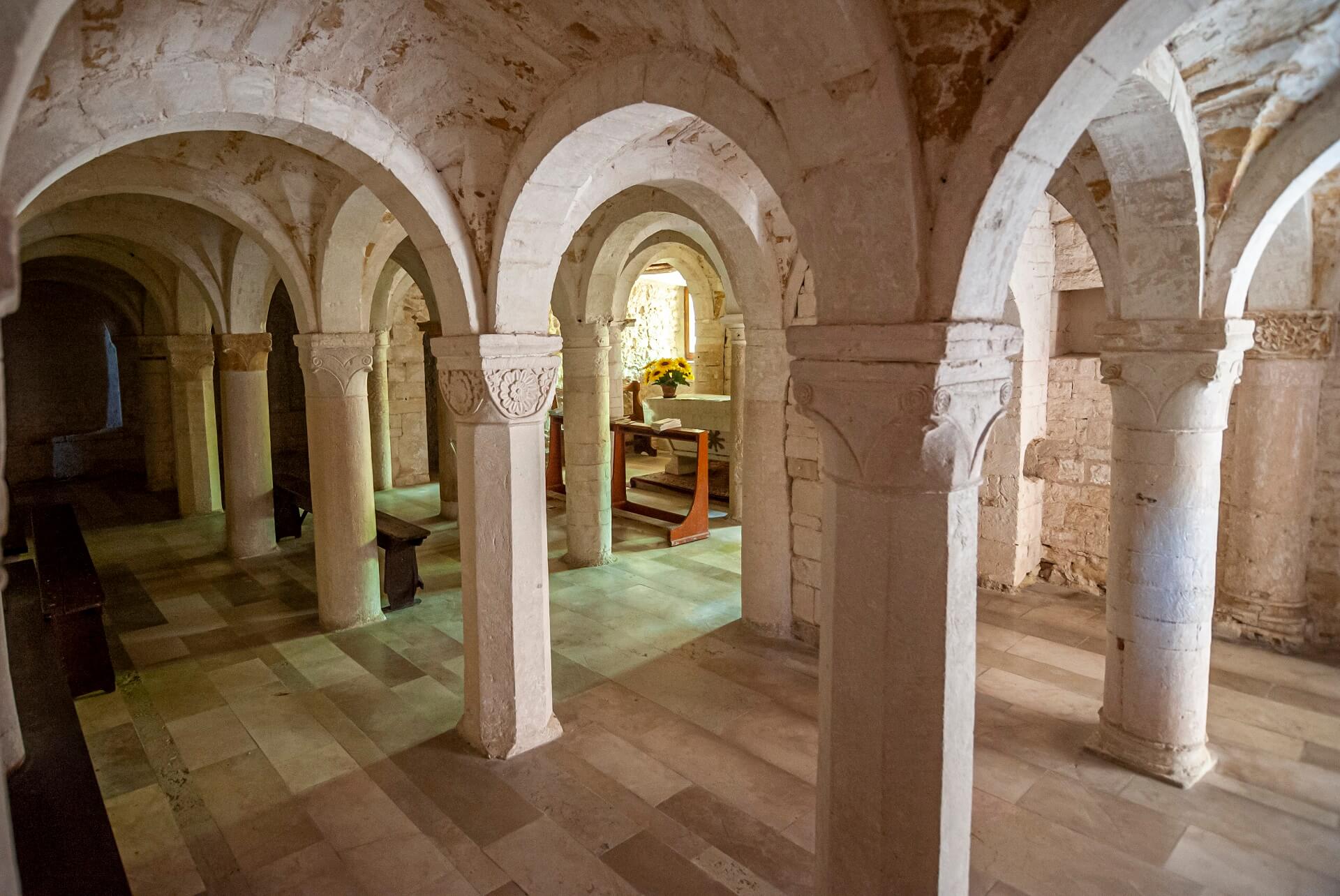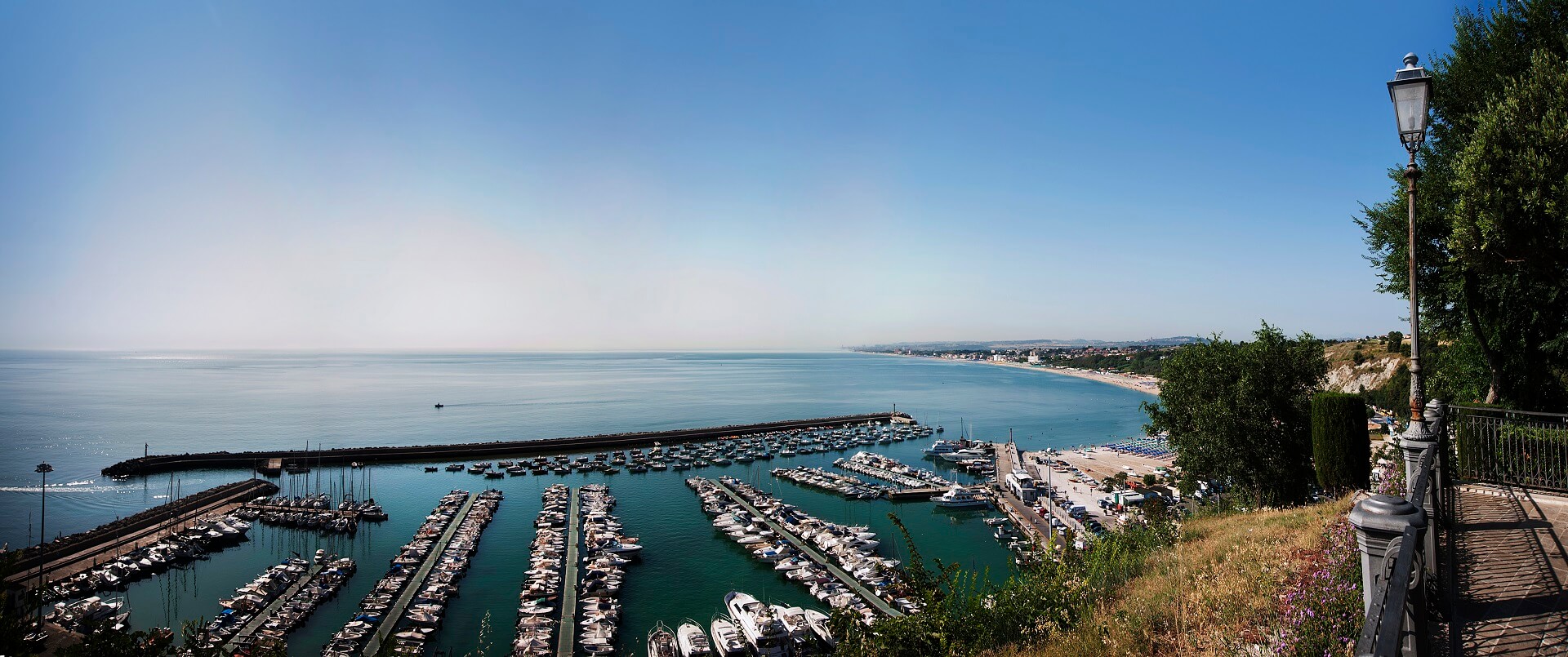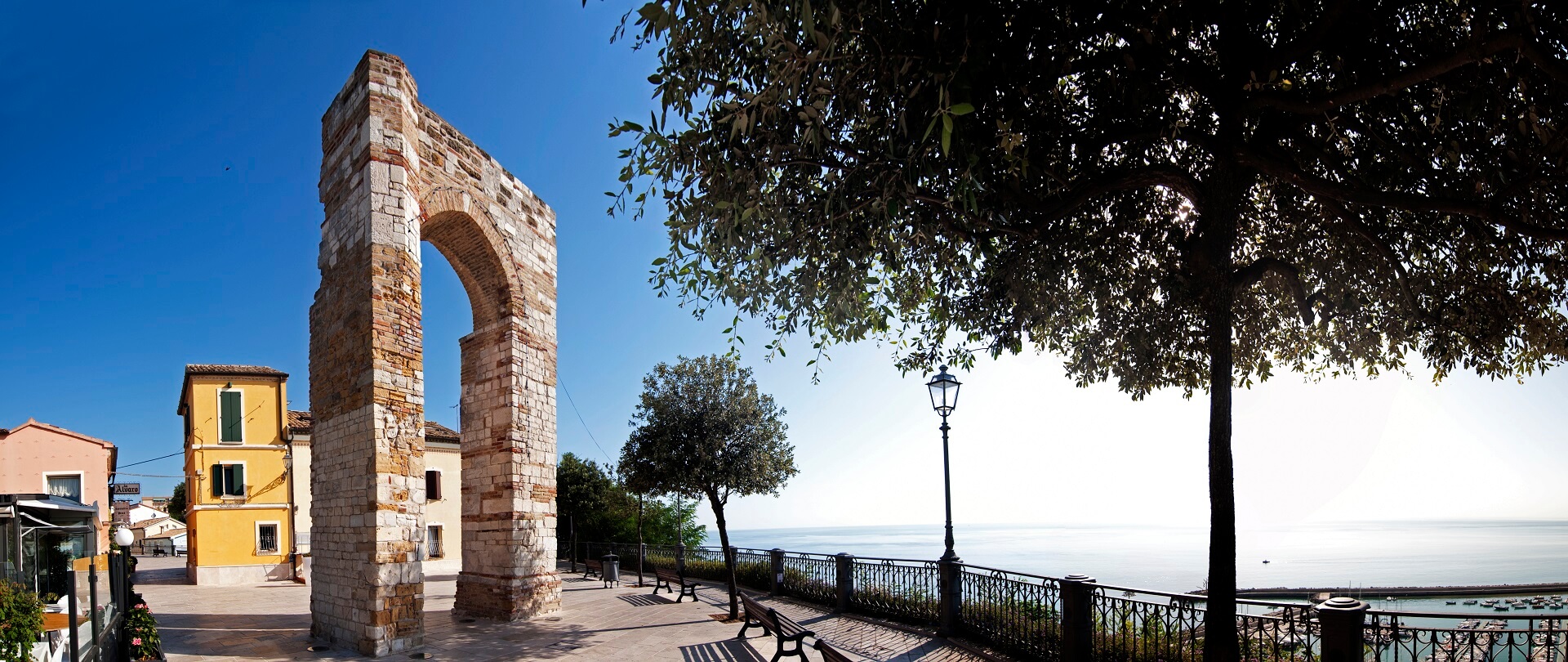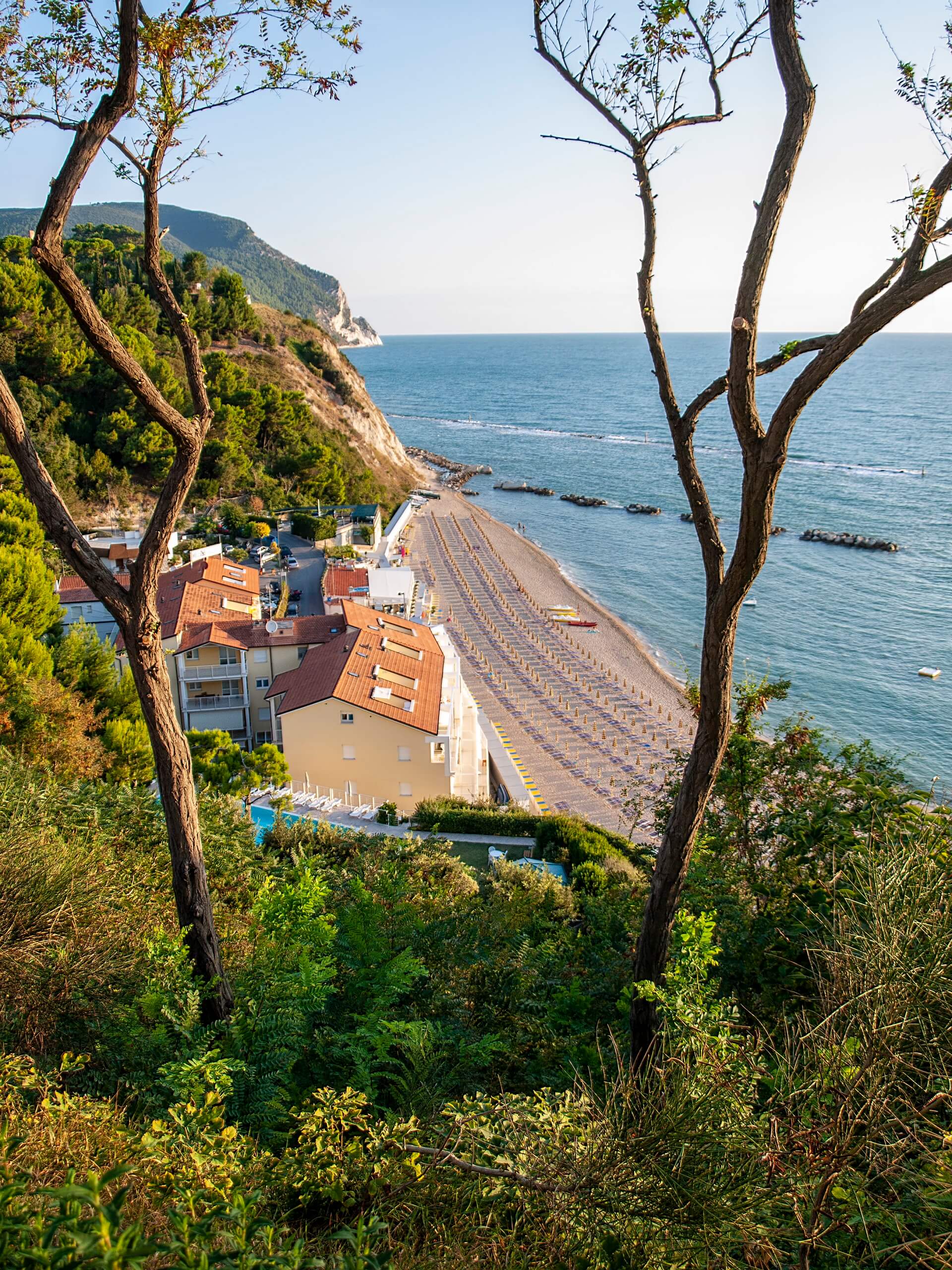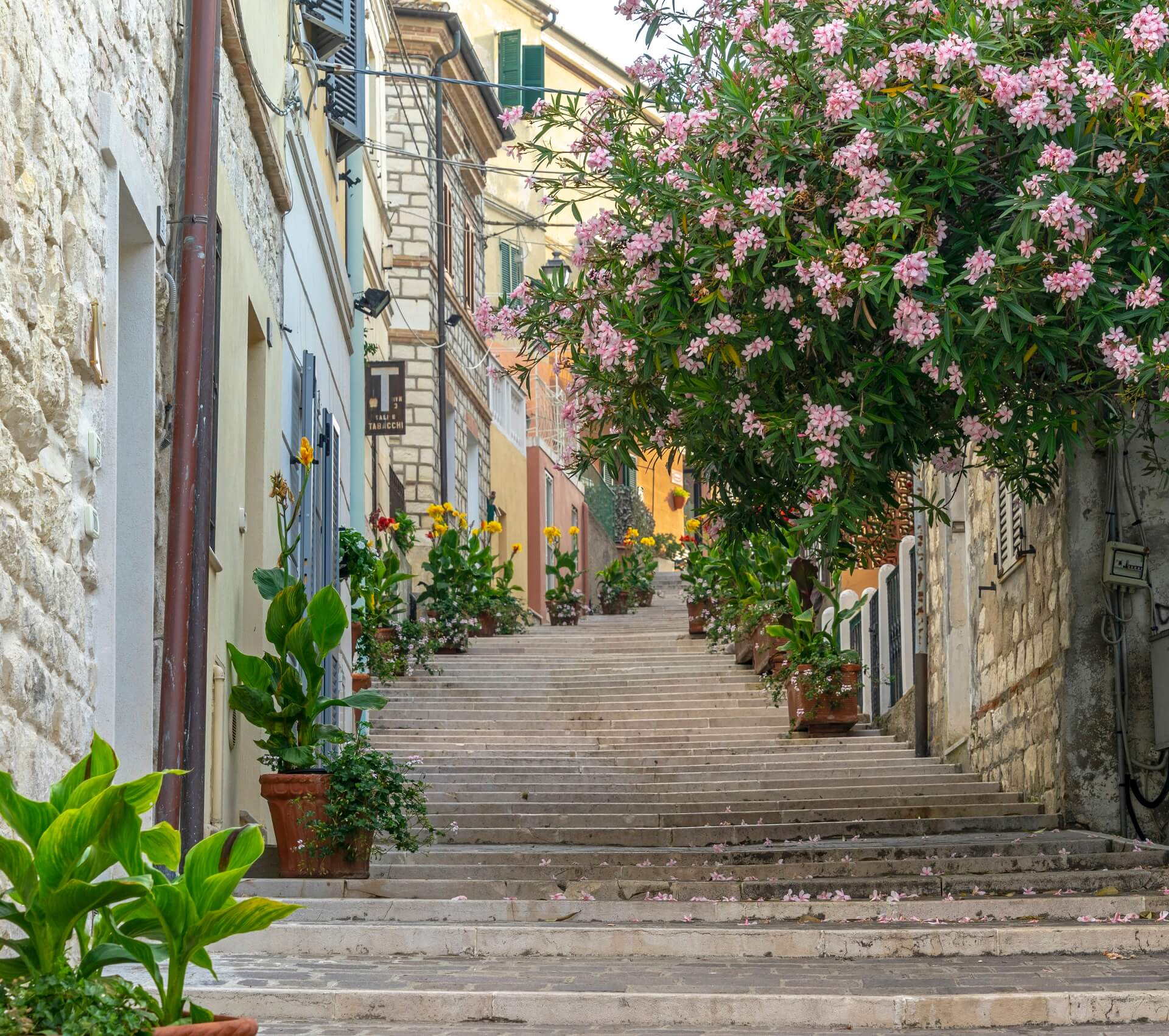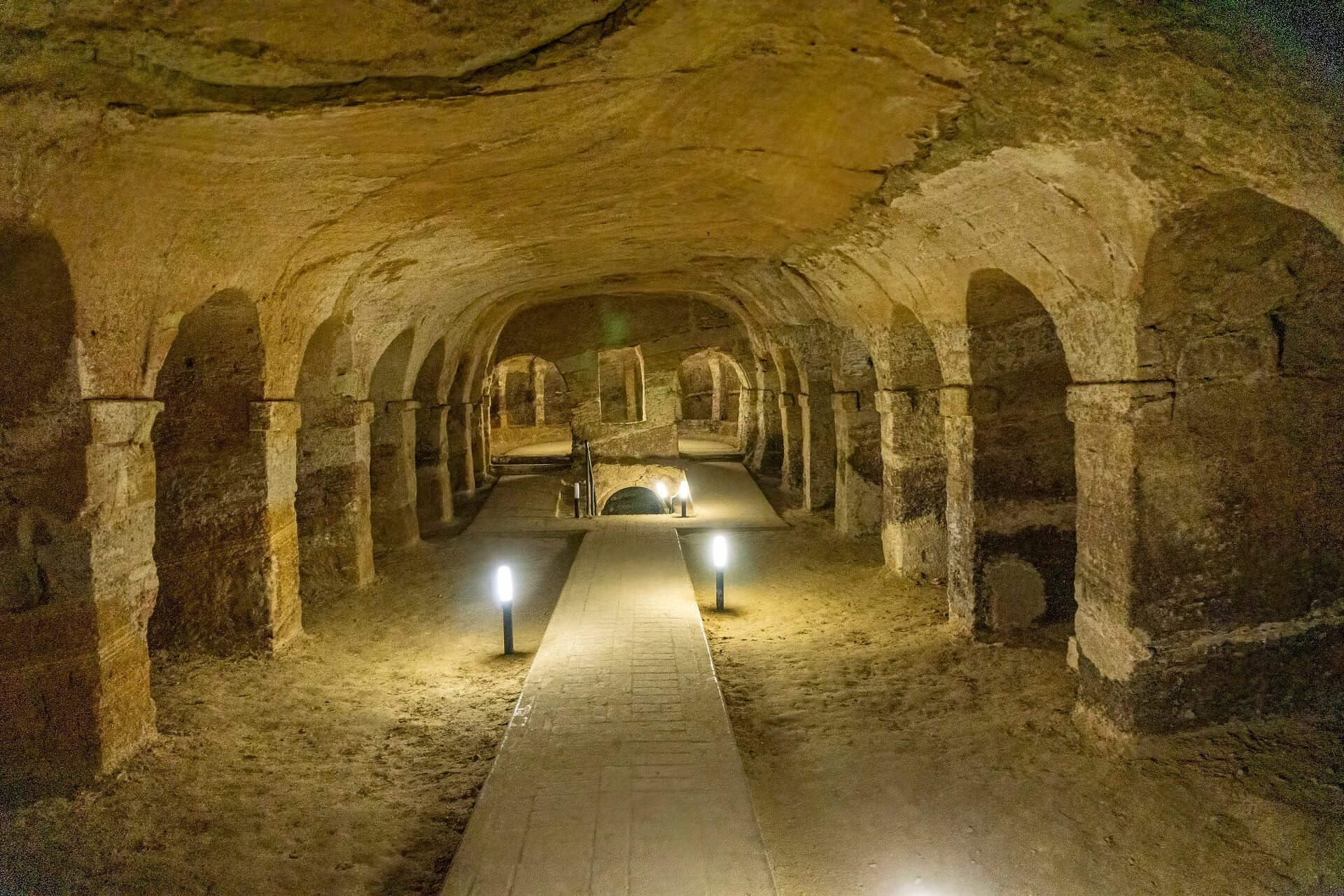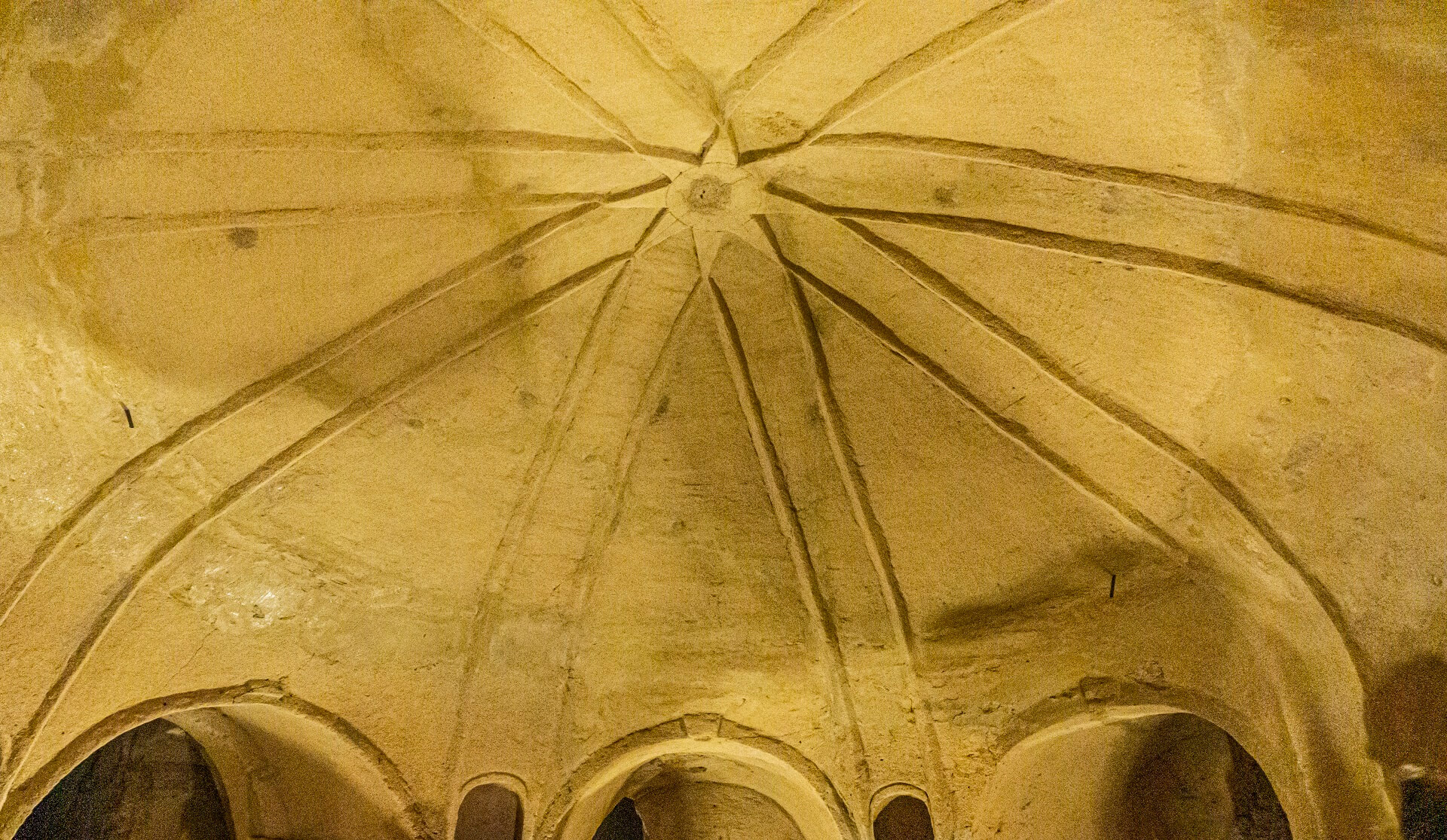An open-air theater, a plurality of landscapes, among villages and parish churches of discreet beauty, verdant hills and gentle slopes, custodians of a substantial artistic, architectural, food and wine heritage, witnesses of an illustrious past.
An Adriatic region that dives into the Mediterranean, leaving behind the imposing Apennines, which with its rivers draws a territory, giving enchanting scenery dotted with millenary fortifications, castles and fortresses.
Five provinces, unique and distinctive, each leaving a strong imprint on the identity of the place.
The pearl of the Marche coast, the Conero Riviera, from its namesake promontory overlooking the sea, stretches from Ancona to Potenza Picena. Forty kilometers of fortified towns, cultural itineraries and lush, sometimes wild nature. High cliffs alternate with equipped beaches and lonely, partly rocky coves, some accessible only by “little roads” or by sea. Within an area of 6,000 hectares, the Conero Park, protects a reserve populated by a rich wildlife, guardian of places of great naturalistic charm and a magnet for many sports enthusiasts.
Among the Riviera’s most famous seaside resorts are Ancona-Portonovo, Sirolo and Numana, all of which have been awarded the prestigious Blue Flag.
Holiday Resorts on the Conero Riviera
The picturesque bay of Portonovo, whose paths, among the verdant Mediterranean scrub, lead to the Clementine Tower, erected in a strategic position in 1716, at the behest of Pope Clement XI°, to defend the territory from piracy. After the Unification of Italy it became a destination for intellectuals and writers, including Gabriele D’Annunzio.
Not far away, following a lane between the sea and the small Lago Profondo, rises at the little Church of Santa Maria, a masterpiece of Romanesque architecture, built by the Benedictines at the beginning of the year one thousand, together with the Monastery, which, in 1518, following a barbarian raid was finally destroyed. While in the Napoleonic period the Church is converted by Italic troops into a warehouse and animal shelter, and building materials are taken for the construction of the nearby Napoleonic Fort, a rare example of coastal fortification. In 1860 with the annexation of the Marches to the Kingdom of Italy, it lost its military function and began to decay. Today it houses a cozy accommodation facility.
Strolling in the area of the Portonovo Pier, Lago Grande, which is also brackish, offers birdwatchers, thanks to a turret station, a privileged position to observe varieties of resident species and migratory flocks.
Sirolo, a village fortified in the 7th century, of which the town gate, a section of the town wall and two towers, the first attached to the church, the second called the Torrione, inscribed in the pentapolis in charge of the defense of the Marche coast, remain as evidence.
Low, one-to-two-story pastel-colored houses and “vigoli,” passable only on foot, among small craft stores and trattorias. Walking along a shady driveway in Piazza Vittorio Veneto, one reaches Piazzale Marino, a panoramic terrace, overlooking the beaches of Due Sorelle, two stacks resembling the outlines of two praying nuns, and Sassi Neri, whose name derives from the presence of Mosciòli on the boulders submerged in the sea. Also in the square stands the neoclassical Church of St. Nicholas of Bari.
During the summer season, theatrical and musical performances are held in the charming “Le Cave” Theater, carved out of the ancient pink Conero stone quarries. The archaeological area I Pini di Sirolo represents the only example in the entire region of a Picenum necropolis with circles, located within the Conero Park in an enchanting panoramic position overlooking the sea.
Numana preserves, in the upper part, its strong seafaring roots. Among the colorful fishermen’s cottages, intricate narrow streets wind their way to a magnificent belvedere overlooking the Conero Riviera coastline. To reach the lower, more modern and livelier part of the town from the center, one walks along the Costarella, the ancient stepped street that, at dawn, fishermen would climb as they returned from fishing. The waterfront is home to numerous trendy clubs and restaurants, as well as bathing establishments, which enliven the Riviera’s nightlife.
Numana has an ancient history rooted in the Neolithic period. The presence of human settlements is evidenced by artifacts of great historical importance preserved in the Antiquarium Statale, the archaeological museum, where, in addition, the treasures of the Picene Queen are on display. A journey through time from prehistory to Romanization.
The heart of the Conero
Camerano: A Memory of the Underground
The historic center of Camerano, in the area between Piazza Roma, Vie Maratti and San Francesco, is traversed by a parallel underground world, composed of a maze of tunnels, tunnels and rooms dug into the sandstone rock, with a labyrinthine pattern, sometimes communicating with each other.
The period of the underground caves would date back to the 14th century, however, some findings would suggest intervention by the Picenes, an Italic people settled in the area between the 11th and 3rd centuries BC, with the function of shelters, storage and water collection. Over time they underwent modifications and extensions up to the first half of the 20th century.
In medieval times each family had its own cave at the palace, with direct access. The artificial caves, took the name of the palaces above, how not to remember Mancinforte, Corraducci, Trionfi and Ferretti. Arranged on several levels, they were not connected to each other, with a few exceptions. A dense network of tunnels, staircases, niches and circular rooms with barrel and ribbed vaults, decorated with columns, altars, friezes, bas-reliefs, esoteric and religious symbols, reveal the nature of the secret meetings, hinting at the celebration of occult practices, or as a meeting place for brotherhoods such as the Order of the Templars or the Sovereign Order of Malta.
The Camerano caves were used until World War II, when in July 1944 the inhabitants of Camerano, together with numerous evacuees from neighboring areas, lived for 18 days right inside them.
Worth visiting are the Town Hall, the Church of St. Faustina and the Church of the Immaculate Conception,where the works of Carlo Maratti, a 19th-century painter to whom Camerano was born, are on display.
Photo Credits: Andrea Tessadori


